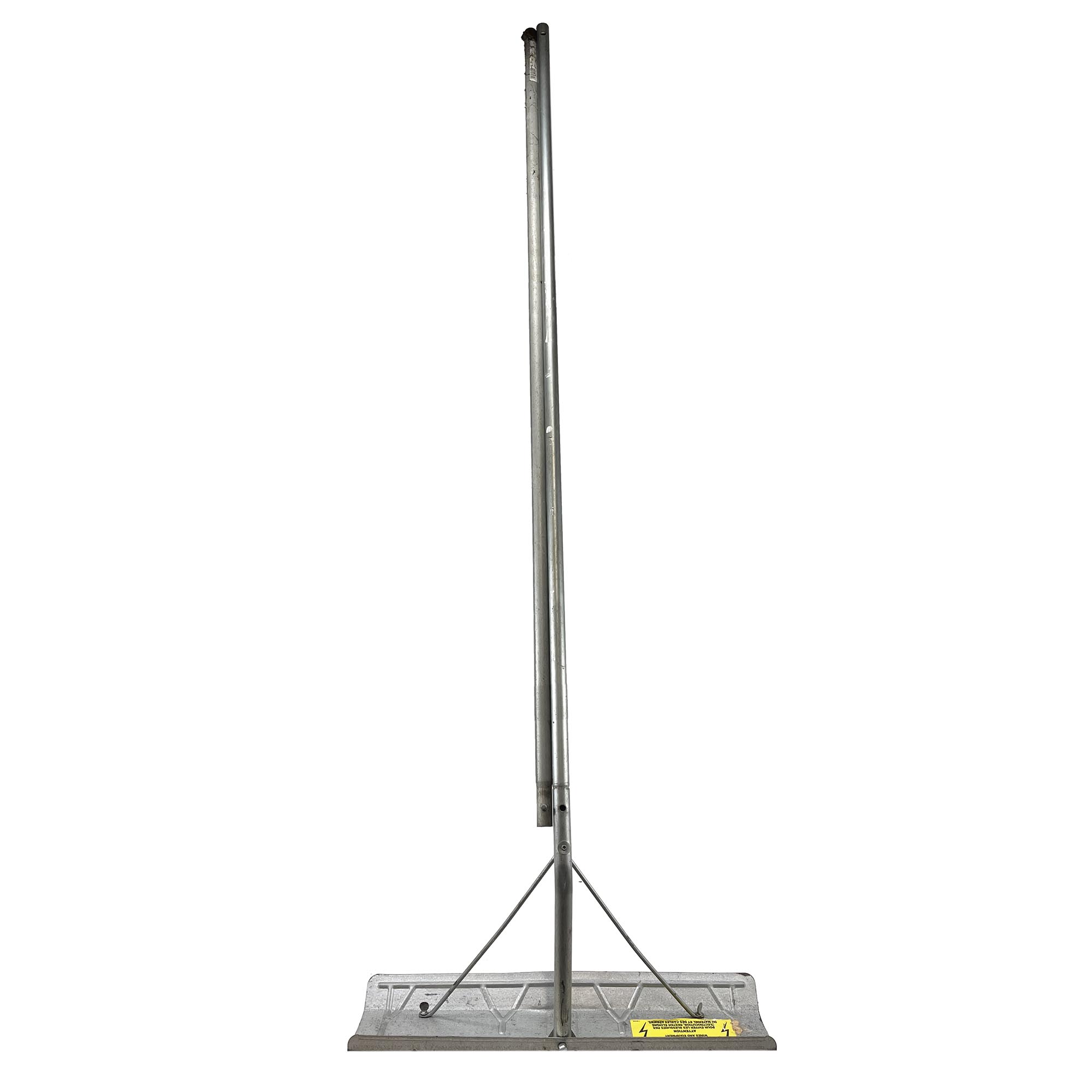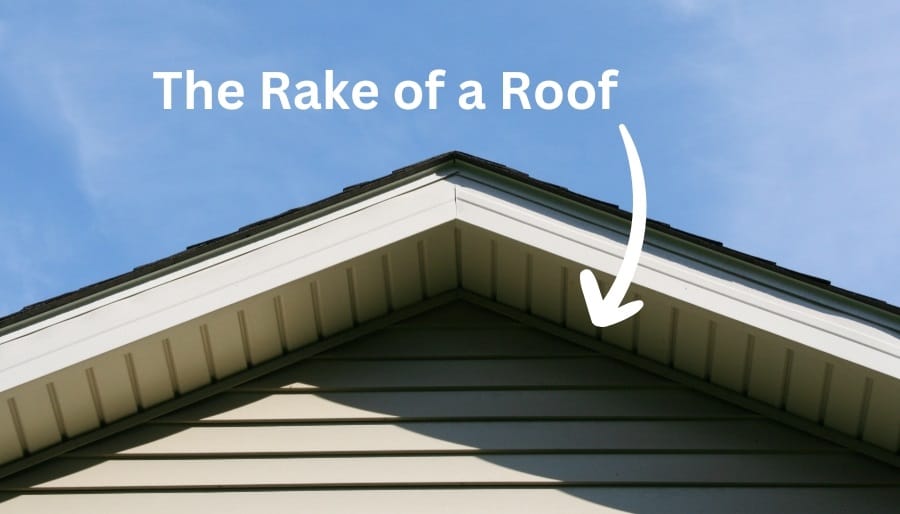Hey there, builders and roof enthusiasts! Have you ever wondered what the heck a rake is when it comes to roofing? Yeah, we’re not talking about the garden tool here. Nope, this is all about the structural and aesthetic aspects of your roof. What is rake on a roof? Well, let me break it down for you in a way that’s super easy to digest. Stick around because this is gonna be a game-changer for anyone diving into roof design or construction.
In simple terms, the rake of a roof refers to the sloped edge of a roof that runs along the gable end. Think of it like the "finishing touch" that gives your roof its unique shape and character. Whether you're a DIY enthusiast or a professional contractor, understanding rakes is crucial for ensuring both functionality and style in your roofing projects. Let’s dive deeper into why rakes matter and how they impact your roof's overall design.
Now, before we get into the nitty-gritty, let me just say this: rakes aren’t just about looks. They play a vital role in how your roof performs, especially when it comes to weather resistance and structural integrity. So, buckle up because we’re about to take you on a journey through the world of roof rakes, complete with tips, tricks, and expert advice!
Read also:Rj Davis And Caleb Love Girlfriend Drama The Full Story You Need To Know
If you're here, chances are you're looking for answers to questions like: What exactly is a rake on a roof? Why does it matter? And how can you make sure your roof rake is up to par? Lucky for you, we’ve got all the answers right here. Let’s get started!
Understanding the Basics: What is Rake on a Roof?
Alright, so let’s start with the basics. A rake on a roof is essentially the sloped edge that runs along the gable end of a roof. This part of the roof is what gives your home that classic "pitched" look, and it’s one of the most important design elements in roofing. The rake isn’t just there for show, though. It serves several critical functions, including weatherproofing and structural support.
Think about it this way: without a properly designed rake, your roof could be vulnerable to water damage, wind uplift, and even structural failure. That’s why understanding the basics of roof rakes is so important, especially if you’re planning a new construction or roof replacement project. Let’s break it down further.
Why is the Rake Important in Roof Design?
Here’s the deal: the rake isn’t just a decorative feature. It’s a crucial part of your roof’s design that affects both its functionality and appearance. For starters, the rake helps direct water away from your home, preventing leaks and water damage. It also adds strength and stability to the gable end of your roof, making it more resistant to strong winds and other weather conditions.
Plus, let’s not forget about aesthetics. A well-designed rake can enhance the curb appeal of your home, giving it that polished, finished look. Whether you’re going for a modern, sleek design or a traditional, classic style, the rake plays a big role in achieving the look you want.
Types of Roof Rakes: Which One is Right for You?
Now that you know what a rake is and why it matters, let’s talk about the different types of roof rakes. There are several options to choose from, each with its own pros and cons. Here’s a quick rundown:
Read also:Pete Hegseth Childrens Names A Closer Look At The Family Life Of A Fox News Star
- Closed Rake: This type of rake is enclosed with fascia boards, giving it a clean and finished appearance. It’s great for homes with a modern or contemporary design.
- Open Rake: Open rakes expose the rafters or trusses, creating a more rustic or traditional look. This option is perfect for homes with a farmhouse or cottage style.
- Boxed Rake: Boxed rakes are enclosed with soffits and fascia boards, providing extra protection against weather elements. They’re a popular choice for homes in areas with harsh climates.
Choosing the right type of rake depends on your personal preferences, the style of your home, and the climate in your area. Let’s explore these options in more detail.
Factors to Consider When Choosing a Roof Rake
When deciding which type of rake is best for your home, there are a few key factors to consider:
- Climate: If you live in an area with heavy rainfall or strong winds, you may want to opt for a closed or boxed rake for added protection.
- Style: Consider the overall style of your home. Do you want a modern, sleek look, or are you going for a more traditional, rustic vibe?
- Budget: Some rake designs are more expensive than others. Be sure to factor in the cost of materials and labor when making your decision.
By taking these factors into account, you’ll be able to choose a roof rake that not only looks great but also performs well in your specific climate and budget constraints.
How to Measure and Install a Roof Rake
Okay, so you’ve decided on the type of rake you want for your roof. Now it’s time to get down to business. Measuring and installing a roof rake can be a bit tricky, but with the right tools and techniques, it’s definitely doable. Here’s a step-by-step guide to help you out:
Step 1: Measure the Rake Angle
The first step is to measure the angle of your rake. This will depend on the pitch of your roof. Use a protractor or a digital level to get an accurate measurement. Once you have the angle, you can use it to determine the length of your rake boards.
Step 2: Cut the Rake Boards
With your measurements in hand, it’s time to cut the rake boards. Be sure to use a saw with a fine blade to get clean, precise cuts. If you’re working with open rakes, you’ll also need to cut the rafters or trusses to the correct length.
Step 3: Install the Rake Boards
Once your boards are cut, it’s time to install them. Start by attaching the rake boards to the gable end of your roof using nails or screws. Make sure they’re securely fastened and level. If you’re installing a closed or boxed rake, you’ll also need to add fascia boards and soffits for a finished look.
And there you have it! With these simple steps, you’ll be able to measure and install a roof rake like a pro. Just remember to take your time and double-check your measurements to ensure a perfect fit.
Common Issues with Roof Rakes and How to Fix Them
Even the best-designed roof rakes can run into problems over time. Here are some common issues you might encounter and how to fix them:
- Water Leaks: If you notice water leaking around your rake, it could be due to damaged or improperly installed flashing. Replace the flashing and seal any gaps with caulk to prevent future leaks.
- Loose Boards: Rake boards can become loose over time, especially in areas with strong winds. Tighten any loose nails or screws and replace any damaged boards as needed.
- Rotting Wood: Moisture can cause wood to rot, leading to structural damage. Replace any rotted wood and treat the area with a moisture-resistant sealant to prevent further damage.
Regular maintenance is key to keeping your roof rake in top condition. Inspect your rake regularly for signs of wear and tear, and address any issues promptly to avoid costly repairs down the line.
Advantages and Disadvantages of Different Rake Designs
Every type of roof rake has its own set of advantages and disadvantages. Here’s a quick breakdown:
Advantages:
- Closed Rake: Offers a clean, modern look and excellent weather protection.
- Open Rake: Provides a rustic, traditional aesthetic and allows for better ventilation.
- Boxed Rake: Provides maximum protection against weather elements and adds extra insulation.
Disadvantages:
- Closed Rake: Can be more expensive to install and may trap moisture if not properly ventilated.
- Open Rake: Less weather-resistant and may require more frequent maintenance.
- Boxed Rake: Can be heavy and may require additional structural support.
Weighing the pros and cons of each design will help you make an informed decision about which rake is best for your home.
Tips for Maintaining Your Roof Rake
Proper maintenance is essential for keeping your roof rake in good condition. Here are some tips to help you keep your rake looking great and functioning properly:
- Inspect your rake regularly for signs of damage or wear.
- Clear debris from the rake area to prevent water buildup.
- Apply a weather-resistant sealant to protect against moisture.
- Repair any loose or damaged boards promptly to prevent further damage.
By following these tips, you’ll be able to extend the lifespan of your roof rake and ensure it continues to perform well for years to come.
Expert Insights: Why Roof Rakes Matter
We spoke with a few roofing experts to get their take on why roof rakes are so important. According to John Smith, a veteran roofer with over 20 years of experience, "The rake is one of the most critical components of a roof. It affects everything from water drainage to wind resistance, and it’s what gives your roof its unique character."
Another expert, Sarah Johnson, added, "When it comes to roof rakes, it’s all about balance. You want a design that looks great but also performs well in your specific climate. That’s why it’s so important to work with a qualified contractor who understands the nuances of roof design."
These insights highlight the importance of paying attention to roof rakes in any roofing project. Whether you’re building a new home or replacing an existing roof, the rake is a detail you can’t afford to overlook.
Conclusion: Why Understanding Roof Rakes is Essential
And there you have it, folks! We’ve covered everything you need to know about roof rakes, from what they are to how to install and maintain them. Remember, the rake is more than just a decorative feature—it’s a crucial part of your roof’s design that affects both its functionality and appearance.
So, whether you’re a DIY enthusiast or a professional contractor, take the time to understand the importance of roof rakes and how they can impact your project. And don’t forget to share your thoughts in the comments below or check out some of our other articles for more roofing tips and tricks!
Table of Contents
- Understanding the Basics: What is Rake on a Roof?
- Why is the Rake Important in Roof Design?
- Types of Roof Rakes: Which One is Right for You?
- Factors to Consider When Choosing a Roof Rake
- How to Measure and Install a Roof Rake
- Common Issues with Roof Rakes and How to Fix Them
- Advantages and Disadvantages of Different Rake Designs
- Tips for Maintaining Your Roof Rake
- Expert Insights: Why Roof Rakes Matter
- Conclusion: Why Understanding Roof Rakes is Essential


